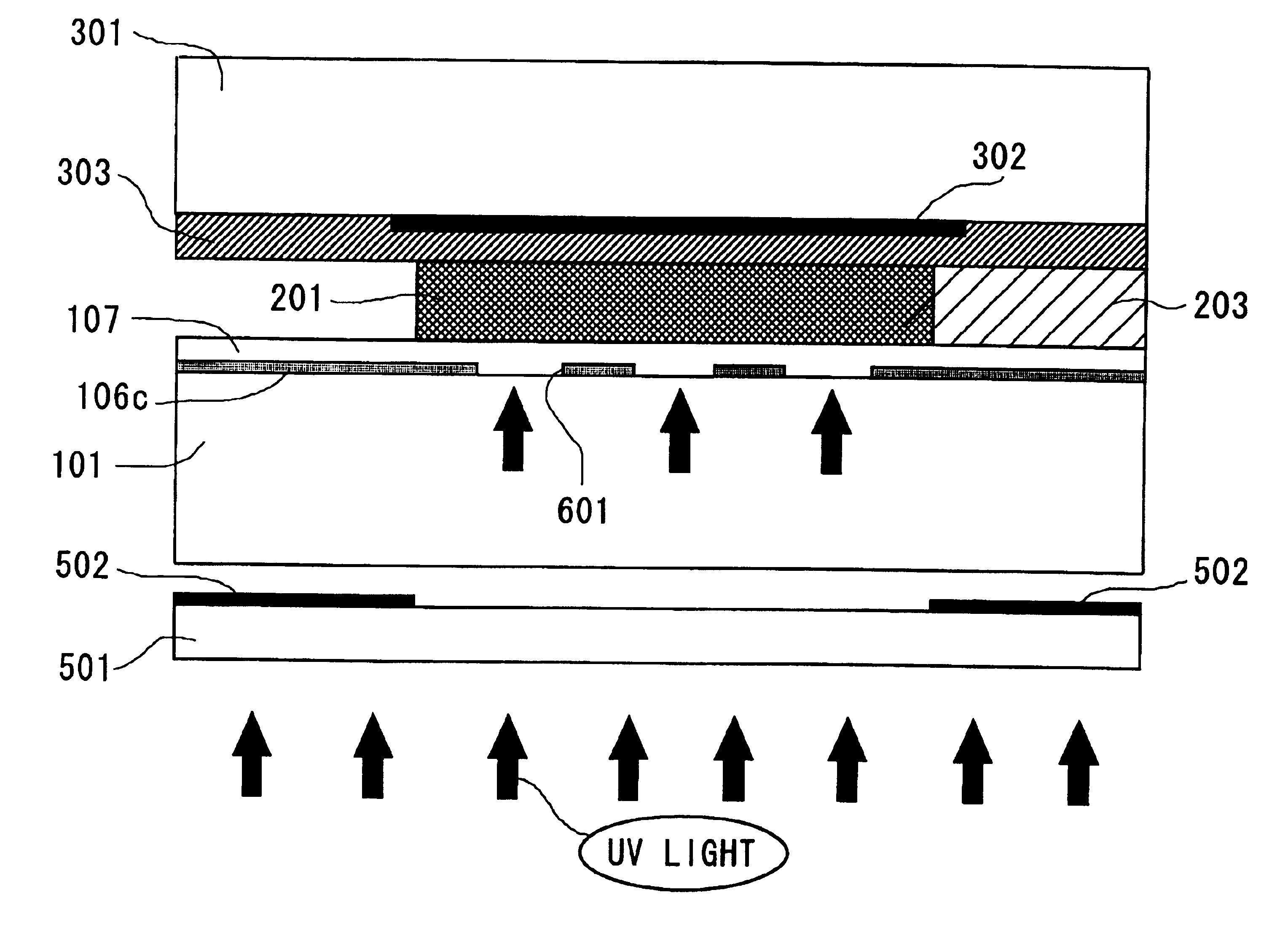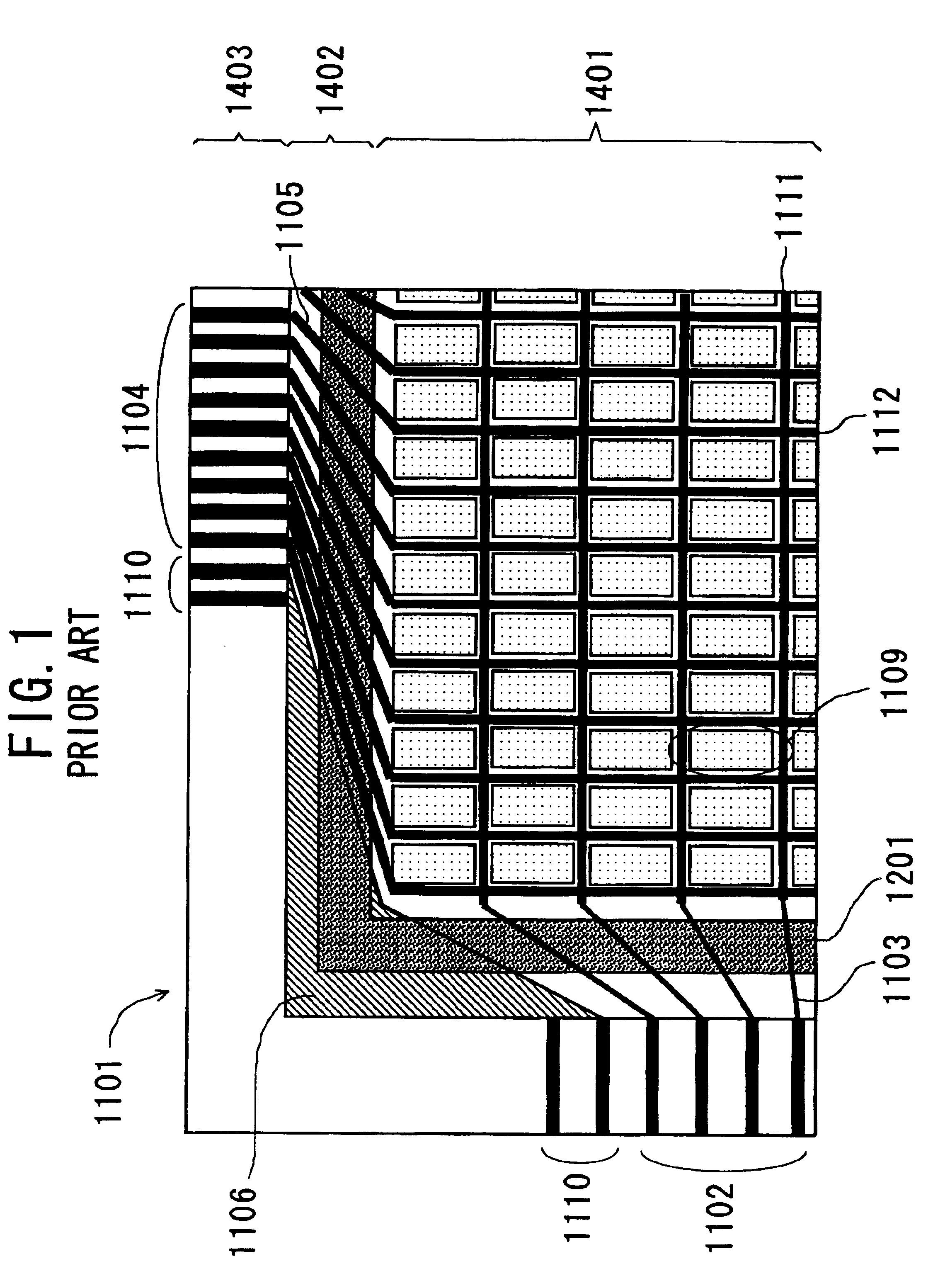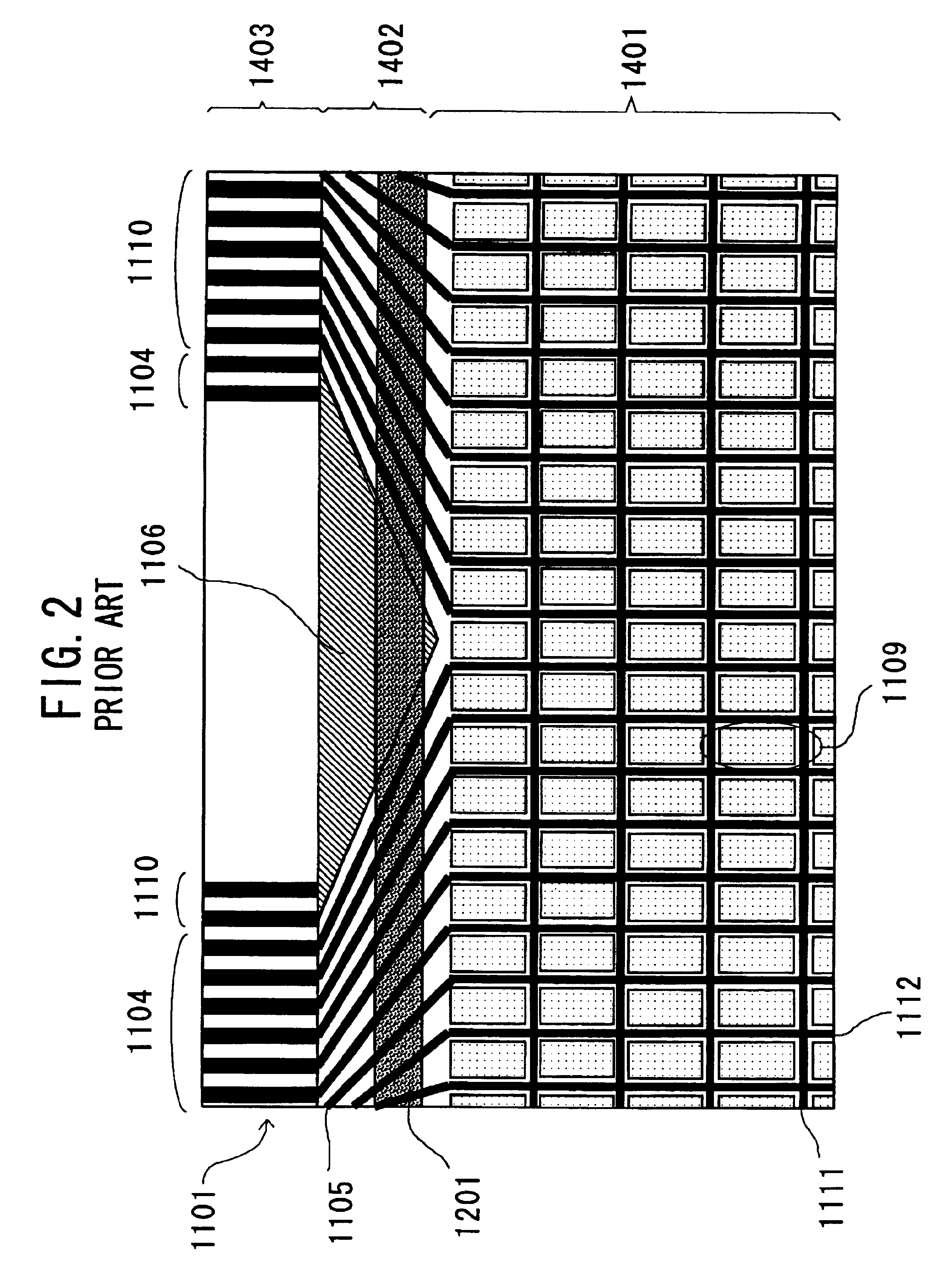Liquid-crystal display device and method of fabricating same
a technology of liquid crystal display and display device, which is applied in the field of liquid crystal display device, can solve the problems of increasing the size of the lcd panel, difficult to reach liquid crystal, and long time to complete the vacuum
- Summary
- Abstract
- Description
- Claims
- Application Information
AI Technical Summary
Benefits of technology
Problems solved by technology
Method used
Image
Examples
first embodiment
[0133]A LCD device according to a first embodiment of the invention is explained below with reference to FIGS. 1 to 8, in which the invention is applied to a LCD device of the Twisted Nematic (TN) type.
[0134]As shown in FIGS. 5 and 6, the LCD panel of the LCD device according to the first embodiment comprises a rectangular lower substrate 101, a rectangular upper substrate 301, and a liquid crystal layer 203 sandwiched by the substrates 101 and 301. The lower substrate 101 is coupled with the upper substrate 301 with the sealing member 201 in such a way that a small gap is formed between the substrates 101 and 301, as shown in FIG. 6. Liquid crystal is filled into the gap and confined by the member 201, forming the liquid crystal layer 203.
[0135]The surface of the lower substrate 101 is divided into a rectangular display area 401 located in the middle part, a rectangular-frame-shaped peripheral area 402 located in the periphery of the substrate 101 to surround the area 401, and a re...
second embodiment
[0167]FIG. 13 shows a LCD device according to a second embodiment of the invention, in which the same reference numerals are attached to the same elements as those of the first embodiment. Therefore, the explanation about the same configuration is omitted for FIG. 13 shows the same cross-section as FIG. 12. As seen from FIG. 13, an opposite light-blocking member 302A is formed to extend along the sealing member 201 in the periphery of the upper substrate 301. Thus, the member 302A is rectangular-frame shaped. The opposite common electrode 303 is formed on the substrate 301 to cover the member 302. The lattice-shaped black matrix (not shown) is formed on the substrate 301 within the area that is surrounded by the member 302 and opposite to the display area 401 of the lower substrate 101. The member 302A is opposite to the light-blocking members 106 of the lower substrate 101. The members 106 have the same structure as the light-blocking members 106a, 106b, and 106c of the first embod...
third embodiment
[0175]FIG. 14 shows a LCD device according to a third embodiment of the invention, in which the same reference numerals are attached to the same elements as those of the first embodiment. Therefore, the explanation about the same configuration is omitted for simplification.
[0176]FIG. 14 shows the same plan view as shown in FIG. 9. As seen from FIG. 9, a vernier 108 is provided by penetrating holes 108a and 108b of the light-blocking member 106. The holes 108a and 108b are located to overlap with the sealing member 201. The holes 109a are strip shaped and arranged in a direction at equal intervals, forming a scale. The holes 108b are formed to write specific numbers (e.g., 0 and 1) or signs (e.g., + and −). The holes 108a and 108b are used to efficiently irradiate the UV light to the sealing member 201 by way of the light-blocking members 106.
[0177]The vernier 108 is used to check the width of the UV-setting resin for the sealing member 201 written on the lower substrate 101 and / or t...
PUM
| Property | Measurement | Unit |
|---|---|---|
| height | aaaaa | aaaaa |
| width | aaaaa | aaaaa |
| temperature | aaaaa | aaaaa |
Abstract
Description
Claims
Application Information
 Login to View More
Login to View More - R&D
- Intellectual Property
- Life Sciences
- Materials
- Tech Scout
- Unparalleled Data Quality
- Higher Quality Content
- 60% Fewer Hallucinations
Browse by: Latest US Patents, China's latest patents, Technical Efficacy Thesaurus, Application Domain, Technology Topic, Popular Technical Reports.
© 2025 PatSnap. All rights reserved.Legal|Privacy policy|Modern Slavery Act Transparency Statement|Sitemap|About US| Contact US: help@patsnap.com



